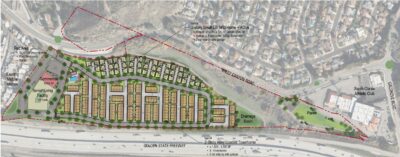With an anticipation that they will bring a significant change of the relationship with customers, the ability to make the sales process easier and to base the decisions on the data, most of the companies make an investment in CRM systems. It has however been noted that an abject failure rate of almost 63 percent of the CRM implementations is attributed to a wrong implementation by the users. Why? This is since other aspects are being looked into other than experience by the firms.
The thing is that, a CRM Design is efficient as it is conceived. And though your team will consider it confusing, clunky, or time consuming, they will make leaps and bounds to have it turned off (even the highly sophisticated capabilities of the solution are not going to help). They are sure, good CRM, but especially they are the good CRM which are conversational, interesting and which have a natural flow in which people move.
CRM Design Revolution
The move in the CRM world is the biggest move in the sector that took place after shifting to cloud computing. With the current system, there has indeed been a huge payoff that has been utilized in terms of artificial intelligence involved in making predictions in regard to customer behavior, performance of basic duties and even in educating the sales person on how to carry out intricate deals. However, the explanation of such technological advancements through the prism of the profound understanding of the behavioral psychology should be referred to as the actual breakthrough. The paper casts doubts on the position of machine learning that is associated with the future generation CRMs to bring the necessary information to the surface at the appropriate moment leave alone the role of the principles of cognitive ease, simplicity of decisions among others to achieve the survival of the end-users. We will discuss case report of AI based CRM that has limited their time taken during on boarding to 60 percent and their win percentage to 27 and some design factors which make such systems seem not as one using software but having a personal assistant.
The COSTS of BAD CRM Design: how Bad UX will quite literally drain your Sales with Hidden costs:
The main problem identified with the CRM by most of the executives is the challenge to the training but this in actual sense is the problem of the fundamental flaws in the design of the CRM. We have found out that the sales reps are losing 5.5 hours per week on an average of their time in trying to manipulate the ancient interfaces of their CRM systems that considering, are better utilized in sales. Even worse, the inaccurate data brought about by the lack of clarity in the processes leads to loss of opportunity and other issues in the running of an organization which estimates an average middle-sized company to lose up to 15 million dollars on a yearly basis. This complex argument illustrates why a design flaw, such as too many clicks, or misleading field names/labels is like the ripples on the water, and may run ripple through your entire organization. You will get to know how to recognize such productivity sabotage that is impossible to notice and touch and how the most profitable sales companies approach their design pattern so that the teams would concentrate on the revenues achieved instead of entering the information.
A Psychology of CRM Resistance Adoption and User Empowerment
Many CRM turn out well and some turn into collecting some random fragments of digital code? The solution lies in the realization of the psychological hurdles that stand against adoption of a user. A neuroscientist study exposes that when a new interface of software is being processed, the brain finds this a threat and associates it to the same pathways of resistance as that of physical threats. The paper also puts into consideration any of the present turn of events in the behavior science and apply to the model of CRM in such a way that these could put the reluctant persons in the bracket where these persons become the eager user. We will take the examples of such real-life cases of small adjustments and their effect on the reality of actual customers where the compliance with data completeness was increased by 73% after a swift re-branding of the necessary fields where we speak about customer insights which can help them sell smarter. You will follow a system of developing CRMs that will not counter the natural behavioral human but will operate in line with it.
The CRM Mandate: The Mobile CRM Revolution: Evolving to the Always-On Sales Force
Since business people in a sales vocation can utilize their smartphones basically to stay in business, the concept of desktop first CRM design no longer exists. Most systems, however, continue to regard mobile as an after-thought and the implication is that most such systems will frustrate the worker during the process and, thus, end up losing productivity. This guide poses the question as to why the quality of the most popular mobile CRMs supersedes the performance of the clodhopper siblings, plus it explores three of the primary precepts of design during which this can be built; glance ability (the capacity to reveal significant information with a sub-second glimpse), action ability (the capacity to execute the following stage in a single tap), and situational awareness (user-interfaces that respond to where and when they are fulfilled). We will speak about how the most accomplished sales organization which are already experiencing mobile-specific functionality of voice control, camera integrations, and offline abilities utilize these capabilities and provide their field workers with an upper advantage. The ten point-list of the review of your mobile CRM experience and the suggestions of improvement are provided in the article.
The Beauty of Dreaming of Designing CRM in the Era of the Hybrid Work
The move to hybrid work has disrupted the paradigm of the conventional CRM. Sales persons are already operating out of home desks, common offices and even at the customer sites, and these also need systems that can bridge business continuity gap even when one worker is not at the same site. This paper will examine asynchronous collaboration feature, intelligent notification elements, and the data on accounts, organized geographically in new design principles of the hybrid work CRMs. You are going to see how the most advanced organizations are rebuilding their CRMs to enable the digital facsimile of watercooler chats that would have automatically exist in offices previously, live pulse checks on pipeline, topics on which conversations could be enabled using Artificial Intelligence.
Parting Shot: A CRM has to be a Helping Hand-Not Pick and Shovel- Connect: A CRM
Great CRMs remain unseen assistants to the work: all CRMs should be as invisible as possible to the work: they should be seen least of all as software: no CRMs should be noticed as much as a zoom of an existing work pattern. Duplicate on psychology and not features and what you will be creating is that which people will pine to use instead of that which the people will be having no choice in.






